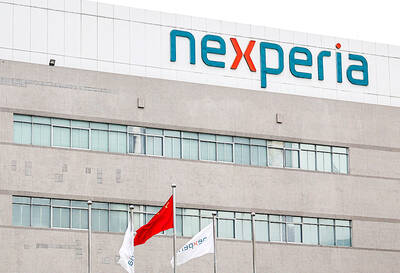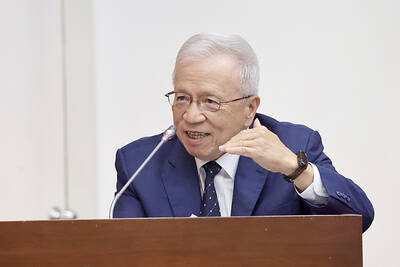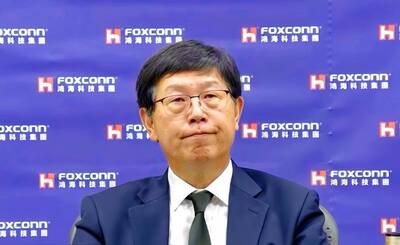Japan’s Kioxia Holdings Corp is focused on pursuing an initial public offering (IPO) as soon as this summer, rather than engaging with potential foreign acquirers and navigating foreign regulatory approvals, four people familiar with the matter said.
The maker of memory chips sees an IPO as the most promising route to realizing value for shareholders, including Toshiba Corp and Bain Capital, said the people, asking not to be named because the deliberations are private.
Their comments came after the Wall Street Journal reported Micron Technology Inc and Western Digital Corp are each exploring a potential deal for Kioxia.
The Tokyo-based company, which makes NAND flash memory chips, has been planning to go public since Toshiba sold a majority stake in the business to a consortium in 2018, including Bain, Apple Inc. and SK Hynix Inc.
The timing for an IPO has slipped because of volatility in the memorychip market, but stakeholders still believe a public offering is the best option for raising cash and rewarding shareholders, the people said.
Kioxia could be valued at more than US$36 billion in the current market, Ace Research Institute analyst Hideki Yasuda said.
Investor appetite for IPOs has surged in recent months, with tech companies such as Coupang Inc and DoorDash Inc soaring since their debuts.
A Kioxia spokesman said the firm would not comment on speculation, but it would continue to seek an appropriate time for the IPO.
Toshiba issued a statement saying it is aware of media reports on a potential deal, but it is not familiar with the details of the reports and could not comment.
Any potential acquisition would face steep regulatory hurdles, which could delay or kill a deal. The Japanese government opposed the sale of Toshiba’s chip business to a foreign buyer three years ago — a key reason Toshiba and Japan’s Hoya Corp together took a majority stake in Kioxia.
Perhaps more importantly, the Chinese government would have to sign off on any agreement and its regulators are likely to resist letting a US firm take over such a valuable business given the rising tensions between the two countries.
A key area of dispute between the US and China is the semiconductor industry, which the administration of former US president Donald Trump used to punish Chinese tech players, such as Huawei Technologies Co (華為).
Applied Materials announced earlier this week that it terminated a plan to acquire Kokusai Electric Corp as it could not get regulatory approval in a timely fashion.
A Western Digital or Micron purchase of Kioxia would consolidate the NAND memory market, reducing the number of top players to four from five.
That could benefit the companies by lowering costs and improving profits, though it might also draw antitrust scrutiny.
“The NAND memory industry may be structurally improved by consolidating if either Micron or Western Digital acquires Kioxia,” Bloomberg Intelligence analysts Anand Srinivasan and Marina Girgis wrote in a research note. “Micron is in a better financial position to pull it off and could benefit more in terms of margins, capacity, technology and capital spending. Regulators, especially in China, would closely eye such a merger.”
Micron and Western Digital rose 4.8 percent and 6.9 percent in US trading on Thursday.
Toshiba gained 4.6 percent in Tokyo Thursday and traded less than 1 percent higher yesterday.

JITTERS: Nexperia has a 20 percent market share for chips powering simpler features such as window controls, and changing supply chains could take years European carmakers are looking into ways to scratch components made with parts from China, spooked by deepening geopolitical spats playing out through chipmaker Nexperia BV and Beijing’s export controls on rare earths. To protect operations from trade ructions, several automakers are pushing major suppliers to find permanent alternatives to Chinese semiconductors, people familiar with the matter said. The industry is considering broader changes to its supply chain to adapt to shifting geopolitics, Europe’s main suppliers lobby CLEPA head Matthias Zink said. “We had some indications already — questions like: ‘How can you supply me without this dependency on China?’” Zink, who also

At least US$50 million for the freedom of an Emirati sheikh: That is the king’s ransom paid two weeks ago to militants linked to al-Qaeda who are pushing to topple the Malian government and impose Islamic law. Alongside a crippling fuel blockade, the Group for the Support of Islam and Muslims (JNIM) has made kidnapping wealthy foreigners for a ransom a pillar of its strategy of “economic jihad.” Its goal: Oust the junta, which has struggled to contain Mali’s decade-long insurgency since taking power following back-to-back coups in 2020 and 2021, by scaring away investors and paralyzing the west African country’s economy.

BUST FEARS: While a KMT legislator asked if an AI bubble could affect Taiwan, the DGBAS minister said the sector appears on track to continue growing The local property market has cooled down moderately following a series of credit control measures designed to contain speculation, the central bank said yesterday, while remaining tight-lipped about potential rule relaxations. Lawmakers in a meeting of the legislature’s Finance Committee voiced concerns to central bank officials that the credit control measures have adversely affected the government’s tax income and small and medium-sized property developers, with limited positive effects. Housing prices have been climbing since 2016, even when the central bank imposed its first set of control measures in 2020, Chinese Nationalist Party (KMT) Legislator Lo Ting-wei (羅廷瑋) said. “Since the second half of

AI BOOST: Next year, the cloud and networking product business is expected to remain a key revenue pillar for the company, Hon Hai chairman Young Liu said Manufacturing giant Hon Hai Precision Industry Co (鴻海精密) yesterday posted its best third-quarter profit in the company’s history, backed by strong demand for artificial intelligence (AI) servers. Net profit expanded 17 percent annually to NT$57.67 billion (US$1.86 billion) from NT$44.36 billion, the company said. On a quarterly basis, net profit soared 30 percent from NT$44.36 billion, it said. Hon Hai, which is Apple Inc’s primary iPhone assembler and makes servers powered by Nvidia Corp’s AI accelerators, said earnings per share expanded to NT$4.15 from NT$3.55 a year earlier and NT$3.19 in the second quarter. Gross margin improved to 6.35 percent,